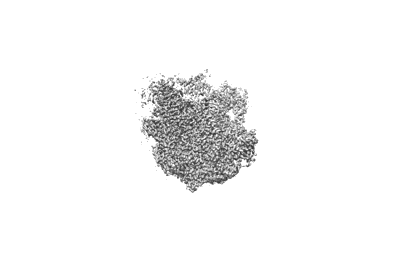EMD-31877
Structure of the post state human RNA Polymerase I Elongation Complex
EMD-31877
Single-particle2.81 Å
 Deposition: 31/08/2021
Deposition: 31/08/2021Map released: 02/03/2022
Last modified: 19/06/2024
Sample Organism:
Homo sapiens
Sample: post state of human RNA Polymerase I Elongation Complex
Fitted models: 7vbb (Avg. Q-score: 0.401)
Deposition Authors: Zhao D, Liu W
Sample: post state of human RNA Polymerase I Elongation Complex
Fitted models: 7vbb (Avg. Q-score: 0.401)
Deposition Authors: Zhao D, Liu W
Structure of the human RNA polymerase I elongation complex.
Abstract:
Eukaryotic RNA polymerase I (Pol I) transcribes ribosomal DNA and generates RNA for ribosome synthesis. Pol I accounts for the majority of cellular transcription activity and dysregulation of Pol I transcription leads to cancers and ribosomopathies. Despite extensive structural studies of yeast Pol I, structure of human Pol I remains unsolved. Here we determined the structures of the human Pol I in the pre-translocation, post-translocation, and backtracked states at near-atomic resolution. The single-subunit peripheral stalk lacks contacts with the DNA-binding clamp and is more flexible than the two-subunit stalk in yeast Pol I. Compared to yeast Pol I, human Pol I possesses a more closed clamp, which makes more contacts with DNA. The Pol I structure in the post-cleavage backtracked state shows that the C-terminal zinc ribbon of RPA12 inserts into an open funnel and facilitates "dinucleotide cleavage" on mismatched DNA-RNA hybrid. Critical disease-associated mutations are mapped on Pol I regions that are involved in catalysis and complex organization. In summary, the structures provide new sights into human Pol I complex organization and efficient proofreading.
Eukaryotic RNA polymerase I (Pol I) transcribes ribosomal DNA and generates RNA for ribosome synthesis. Pol I accounts for the majority of cellular transcription activity and dysregulation of Pol I transcription leads to cancers and ribosomopathies. Despite extensive structural studies of yeast Pol I, structure of human Pol I remains unsolved. Here we determined the structures of the human Pol I in the pre-translocation, post-translocation, and backtracked states at near-atomic resolution. The single-subunit peripheral stalk lacks contacts with the DNA-binding clamp and is more flexible than the two-subunit stalk in yeast Pol I. Compared to yeast Pol I, human Pol I possesses a more closed clamp, which makes more contacts with DNA. The Pol I structure in the post-cleavage backtracked state shows that the C-terminal zinc ribbon of RPA12 inserts into an open funnel and facilitates "dinucleotide cleavage" on mismatched DNA-RNA hybrid. Critical disease-associated mutations are mapped on Pol I regions that are involved in catalysis and complex organization. In summary, the structures provide new sights into human Pol I complex organization and efficient proofreading.

